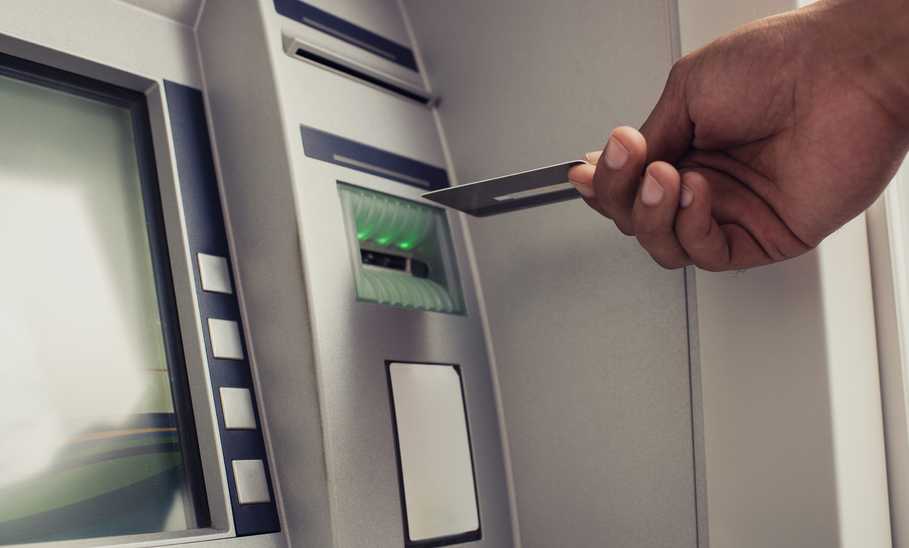
What Is a Debit Card? Essential Guide
A debit card is a popular payment method enabling payments directly from your bank account. If you want to go shopping and pay from your checking account, a debit card allows you to pay instantly with funds immediately withdrawn from your account.
While debit cards are convenient, they’re also prone to problems due to several security risks. Keep reading to learn more about how debit cards work and the pros and cons of using them for payments.
How a debit card works
Debit cards were the second most popular payment method in the United States in 2022, ahead of cash and checks but behind credit cards. While they look like credit cards and often carry the same Visa or Mastercard logos as credit cards, they work differently.
When you check out with a debit card, the merchant’s payment processor sends an electronic message to your bank to ensure that sufficient funds are available. If everything with your card and connected account is working and funds are available, the bank sends a message that the payment is approved, deducts the amount from your account, and begins sending the funds to the seller’s bank account.
Debit card payments are quick and simple. They’re typically free and easy to understand if you don’t overdraw your account. However, several security concerns could have you looking for a credit card as a better payment option.
Debit cards: Pros and cons
|
Fast and convenient payment method. |
If someone steals your card information, they can drain your bank account. |
|
Low cost or no cost to use. |
Usually doesn’t have the same $0 liability you’ll get with major credit cards. |
|
Funds are instantly withdrawn from a linked bank account. |
Authorizations and holds lock up funds in your bank account. |
Types of debit cards
Debit cards are not all created equal. Here’s a look at three types you may encounter.
Bank debit cards
Virtually every bank offers debit cards linked to checking accounts. When you open a new checking account, you’ll usually get a debit card in the mail shortly after. The debit card works as described above, where purchases automatically deduct funds from your linked account.
Debit cards are also commonly offered with money market bank accounts and may work with other accounts, depending on the bank. Nearly any online or brick-and-mortar bank features a debit card offering.
An example is the Zeta Joint Account, a shared bank account for couples looking to manage expenses and bills together. With qualifying direct deposit or a $5,000 minimum balance, you can earn a competitive interest rate and unlock additional perks. It can be a good option for unmarried couples looking to share expenses or married couples looking to improve their banking management together.
Reloadable debit cards
Reloadable debit cards come with many features of a checking account but are technically a stand-alone account. With reloadable debit cards, you can add funds to your account through bank transfers, deposits in a retail store, or other supported methods.
Examples of reloadable debit cards include:
- Acorns Early. Acorns Early is a reloadable debit card product for kids and teens. Parents have several options to monitor and control their child’s spending. Cards require a $5 monthly fee for a single child or $10 per month for families with up to four children after a free trial.
- Netspend® Visa® Prepaid Card. In addition to a high APY on its savings accounts, the Netspend® Visa® Prepaid Card has no minimum balance requirements, no activation fees and no credit check. You can get paid via direct deposit up to two days early and its “purchase cushion” will cover you for up to $10 if you don’t have enough money to pay for a purchase.
Prepaid gift cards
Prepaid gift cards are one-time-use cards. Funds are added up front, and no additional deposits are possible. You can find prepaid gift cards at grocery stores, convenience stores, and office supply stores, among others, usually featured in a display.. They often require an activation fee and can be tricky to use up completely, as the final purchase to get the balance to zero has to be for the exact amount remaining on the card.
Debit card fees
Debit cards can be free, but some issuers require recurring or transaction-specific fees.
Recurring fees
Some cards require a recurring monthly or annual fee to maintain the card account. Recurring account fees can be worthwhile in some circumstances, but be aware of how much you pay.
Activation fees
Activation fees are one-time fees when opening a new account. Activation fees can vary widely by issuer. Many cards come with no activation or account opening fee.
Overdraft fees
If you try to withdraw or spend more than your account balance, the issuer may allow the transaction to go through and charge a fee. Overdraft fees are typically about $35 per occurrence. You can avoid them by making sure that your account balance is sufficient before purchasing.
Foreign transaction fees
When using a card outside of the United States or for international purchases online, the issuer generally charges a fee of around 3% of the transaction amount. Some credit cards come with no foreign transaction fee, which is helpful to frequent international travelers.
Alternatives to debit cards
Bank debit cards are one of many ways to pay. Credit cards are nearly as popular in the United States, and you can use other types of cards with similar features to debit cards.
Debit card vs. credit card
Credit cards are the most secure payment method thanks to a combination of features. In the United States all major credit cards are protected by $0 fraud liability. If someone steals your card information and makes unauthorized charges, you can contact your issuer to have the charges removed from your account. In contrast, with debit cards you must wait to get funds back, and you may not recover every dollar.
Credit cards impose monthly interest charges when you carry a balance from month to month. However, if you pay off the card balance in full by the monthly due date, you don’t have to pay any interest.
Debit card vs. prepaid card
Prepaid cards are a type of debit card that allows you to regularly replenish your balance and spend like a debit card linked to a bank account. The downside of prepaid cards can include fees, no fraud protection, and a lack of the Federal Deposit Insurance Corporation (FDIC) insurance you get with a bank account.
Debit card vs. ATM card
An ATM card is a card that only works at ATMs and doesn’t include debit card features. Many debit cards work as ATM cards, but some ATM cards are stand-alone products that don’t work where Visa, Mastercard, or American Express cards are accepted.
Time Stamp: Debit cards are convenient but come with security risks
Debit cards are convenient and easy to use, but pay close attention to security drawbacks and fees to be certain they’re right for you. A credit card could be a better choice, but if you decide to use one instead of a debit card, remember to pay it off in full by the monthly due date to avoid paying interest.
Frequently asked questions (FAQs)
How to handle a lost or stolen debit card
If your debit card is lost or stolen, contact your bank immediately. It will cancel your debit card number and send a replacement card. Some banks charge a fee for replacement cards.
How do I get a debit card?
You can get a debit card by opening a checking or debit card account with a trusted bank or debit issuer. You can consult with our recommendations for the best checking accounts here.
What is CVV on a debit card?
A CVV code is a three- or four-digit security code usually on the back of your debit card. The CVV code is often required for online purchases as a fraud-prevention measure.
Can I rent a car with a debit card?
Many rental car companies don’t allow you to use a debit card when renting a car. If you can use a debit card, the rental company usually holds a large balance from your bank account to ensure that it can recover funds for damage.
The information presented here is created by TIME Stamped and overseen by TIME editorial staff. To learn more, see our About Us page.


